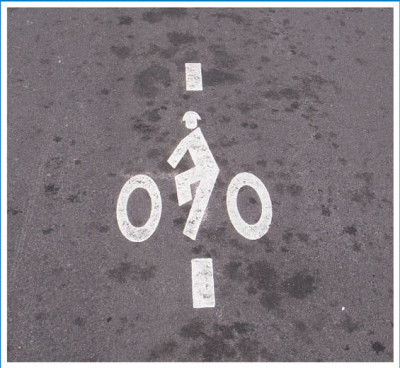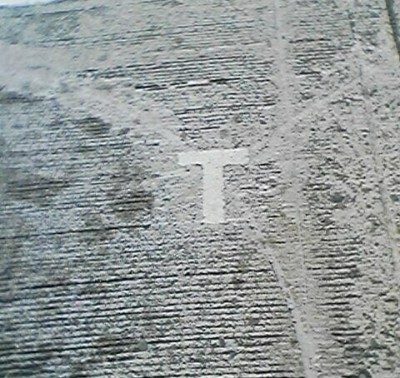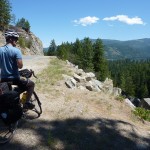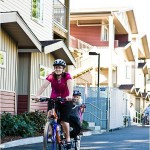Legislation introduced yesterday in the Washington State Senate provides a safe and reasonable procedure to proceed through broken traffic signals that fail to detect bicycles.

Someday, all traffic signals will detect bicycle riders. Until then SB 5438 provides a safe protocol to address getting stuck at red lights. Photo: Seattle Bike Blog
It doesn’t get much more frustrating than to ride a bike and get stuck at a red light that fails to detect you and doesn’t turn green. Still, this a too-common occurrence for bicycle riders on streets across Washington state.
Luckily, in 2009 Washington Bikes, with the help of the Washington Road Riders, passed legislation that requires all jurisdictions to make traffic signals detect bicycles and motorcycles (subject to the availability of funds), if they are undergoing maintenance (also, with priority to complaints made), and if they are installed after July 26, 2009.
Progress is being made in many cities to update traffic signals to conform them to state law, but unfortunately many older traffic signals statewide still fail to reliably detect bicycle riders.
To help address this problem SB 5141, sponsored by Senator Curtis King (R-Yakima), was passed in 2014 allowing for motorcycles to stop and proceed or make left-hand turns through traffic control signals that do not detect motorcycles under certain very limited conditions with a specific protocol that is clear and understood by law enforcement.
For a variety of reasons, the legislation passed last year did not include bicycles. The omission was noticed by Washington Bikes, as well as many bicycle riders around the state (and reportedly by our bike riding Governor at the bill signing ceremony, too) and with input from the Washington Bikes Legislative and Statewide Issues Committee, adding bicycles to the law became a 2015 legislative priority of Washington Bikes.
SB 5438 is sponsored by Senate Transportation Committee Chair Curtis King who led the successful passage of last year’s legislation. SB 5438 builds on the 2009 and 2014 legislation by continuing to provide a legal protocol for how bicycle riders can address getting stuck at a traffic signal that fails to detect them.
Adding bicycles to the 2014 law that addressed motorcycles, provides road users the following benefits:
- Uniformity in addressing faulty traffic signals. The current law treats motorcycles and bicycles differently at traffic signals. This creates confusion for the public and potentially for law enforcement in its application of the law.
- Provides a clear protocol for bicycles to safely address situations where city, county or state infrastructure fails to properly detect them.
- Promotes safety. Encourages users to come to a full and complete stop, observe conditions, and requires operators of bicycles and motorcycles to wait a complete signal phase before taking appropriate action.

Don’t see a bike symbol on the pavement? Older bicycle-specific markings include this T symbol. Put your bike on it to trigger the light. Photo Seattle Dept of Transportation.
Also, important: if the signal is actually working, this legislation doesn’t give someone the excuse to proceed quickly through a light without the green! Make sure the light is really broken before proceeding by following the protocol of waiting through an entire signal phase and looking for appropriate bicycle markings on the pavement to attempt to trigger the light (if they exist).
SB 5438 provides bicycle riders a simple solution, improves 2014’s legislation so that bicycles and motorcycles conform to address the same protocol when getting stuck at a red light, and still requires everyone to stop and follow laws to engage traffic signals at every intersection.
Ultimately, we hope there comes a time when all traffic signals detect bicycles and motorcycles and this law becomes moot. Until then, bicycle riders and motorcyclists should have a safe and clear protocol for how to address broken red lights.
And always, if you get stuck at a red light, call, email, or Tweet it in to the city, county, or state transportation department in charge so they can fix it according to state law.




5 Comments
There should be an exemption for waiting, as long as cities don’t have to immediately improve a signal upon notification that it doesn’t detect bikes. For commuters who ride the same route every day, trust them to know which signals work and which don’t. If a commuter (or other frequent user of a particular intersection) knows the signal doesn’t detect them, they should be able to proceed through the intersection whenever it is safe to do so, if they are willing to take the risk. Don’t steal 2 minutes of my and other cyclists’ lives every day at every one of your old non-functional signals if your municipality is too cheap to treat cyclists fairly.
It would be nice to know if the detector has noticed you. Here’s a simple solution being tried out in Portland
http://bikeportland.org/2012/06/20/pbot-experiments-with-intelligent-new-indicator-light-73548
Great news! Thank You, thank you!
It’s tough to determine the length of a signal phase when you are at a deserted intersection and the light never changes. Seems like a set number of minutes would make more sense. Maybe 2 mins for a simple 4-way intersection and 3 for a more complicated ones.
I love the blue light sensor-triggered indicator they have down in Portland at the Rose Quarter East Side Esplanade exit. Some of the longer cycle intersections could use those. Always nice to know the wait won’t be interminable.
I know of over a dozen intersections in Clark County that don’t meet standards, time to make a list.
Well, not quite–we DO want every light to detect people on bikes every time!
We got the law passed in 2009 that requires cities to install signals that detect bikes when they’re putting in new systems and when they’re upgrading old ones.
Given the thousands of traffic lights in the state it will take a while for cities to update all signals. In the meantime, we want people on bikes to have the same legal right to deal with the signal problem that motorcyclists got in the law passed last session.
One Trackback
[…] WA decides that it’s cheaper to allow bikes to run broken traffic lights than it is to make every light detect cyclists every time. SB 5438 – Updating State Law to Accommodate for Faulty Traffic Signal Detection […]